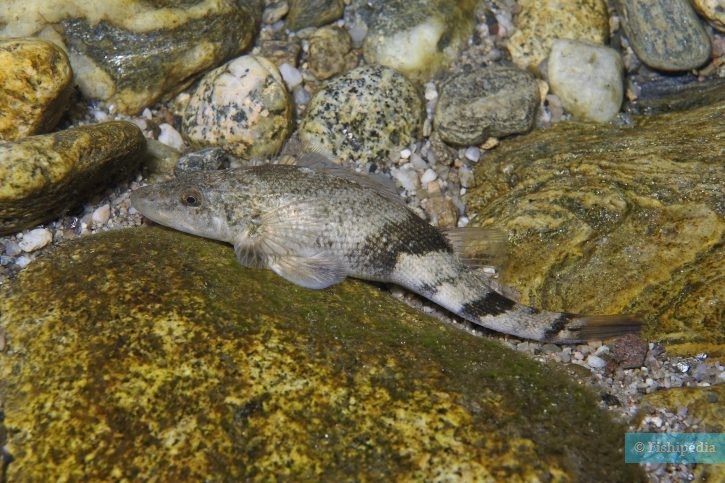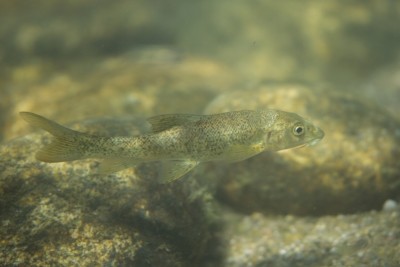rhône streber
| Scientific name | Zingel asper |
|---|---|
| Descriptor | Linnaeus |
| Year of description | 1758 |
| IUCN category (World) | EN |
| Family | Percidae |
| Genus | Zingel |


Introduction
The Zingel asper, more commonly known as the Rhône streber, is a freshwater fish native to Europe.
Who is it?
Morphology
-
Average size20 cm
-
Maximum size22 cm
-
Average size20 cm
-
Maximum size22 cm
How to recognize This fish ?
The Rhône streber is endemic to the Rhône basin which includes the Saône and its tributaries. Its origin is the Doubs basin. Its identification is easy due to its unique appearance: fusiform, anterior half compressed and flattened ventrally, then cylindrical after the anus.
It has a large conical head with a crescent-shaped mouth under a rounded muzzle. Its coloration is typical with three dark bands resembling a saddle.
Behaviour & Life cycle
-
dietcarnivorous
-
Sociabilitysolitary
-
territorialYes
-
Way of livingdiurnal
The Rhône streber is a fish that is always solitary and naturally resides on the bottom.
Motionless and camouflaged, it emerges at dusk in search of small prey (annelids, insect larvae, and probably fry) around its territory. It always returns faithfully to its daytime shelter. It appears that the streber is a migratory fish.
Reproduction
-
Reproductionovipare qui pond sur substrat caché
The Rhône streber is an oviparous fish that spawns on coarse sand substrate. Spawning occurs in March: a group of mature males waits for gravid females to swim downstream one by one to reach the spawning grounds.
Harmless species
This species does not represent any particular threats to humans when encountered in its natural environment.
Origin and distribution
What is its habitat?
Natural environment characteristics
-
Temperature15 - 25 °C
-
pH (acidity)7.2 - 8.4
-
FlowStrong
Biotope presentation
The species particularly prefers clear waters with strong currents and rapids, on courses with channeled or braided beds in the shaded and barbel zone. The substrate is usually made up of pebbles.
Species of the same biotope
To go further
Sources & Contributions
Participation & Validation
The Fishipedia team and specialist contributors are committed to providing high-quality content. However, although the information comes from scientific sources or testimonials from specialists, the cards may contain inaccuracies.

Benoit Chartrer

Patrick Chartrer
Translation
Translation done with the valuable contribution of our translators, who make this information available to a wider audience. We sincerely thank them for their commitment.
Bibliographic references
Les Poissons d'eau douce de France - Eric Feunteun - Jean Allardi - Philippe Keith - Biotope Edition - 2011. Collection Inventaires & Biodiversité, publication scientifique du Muséum

























